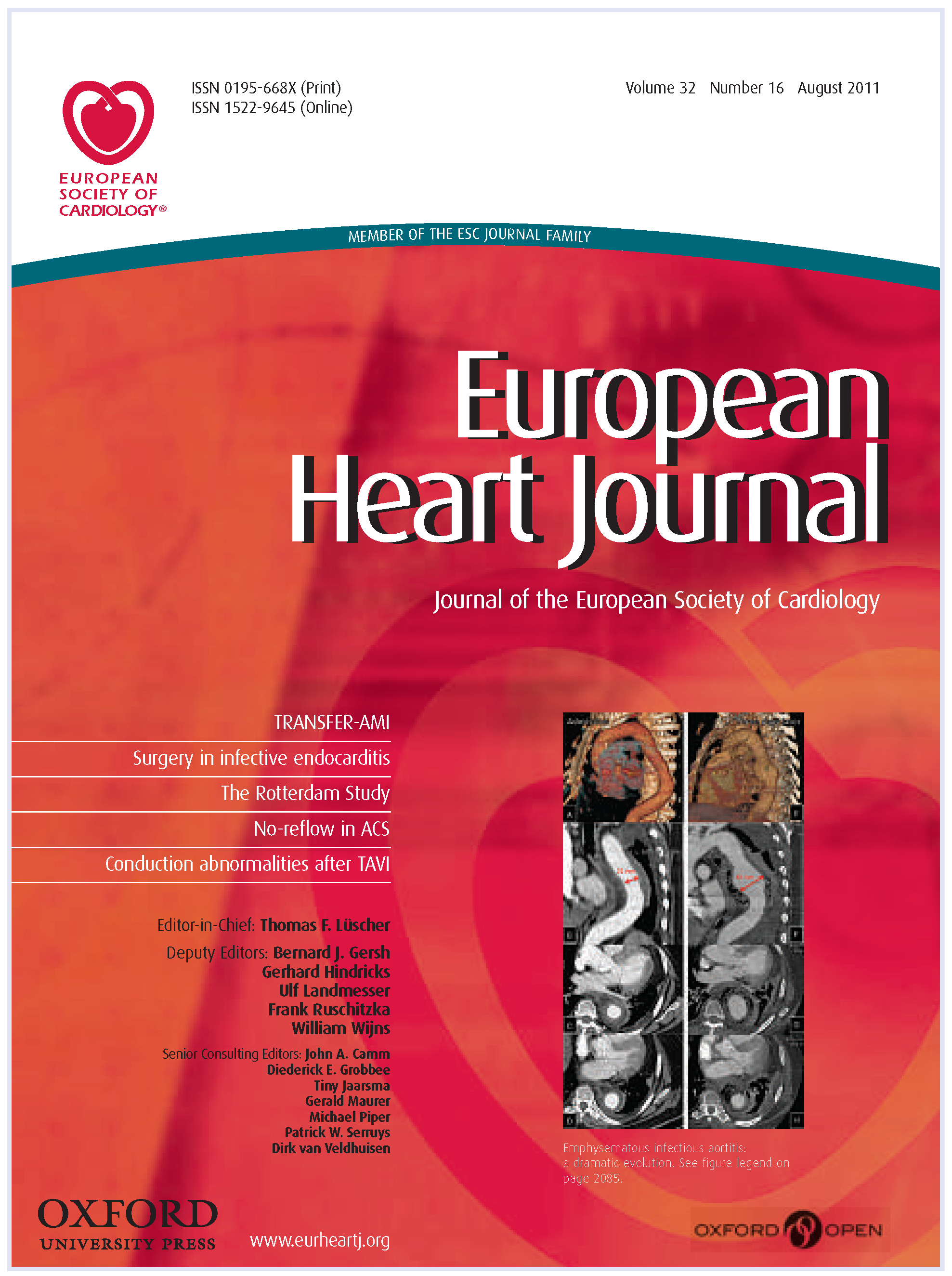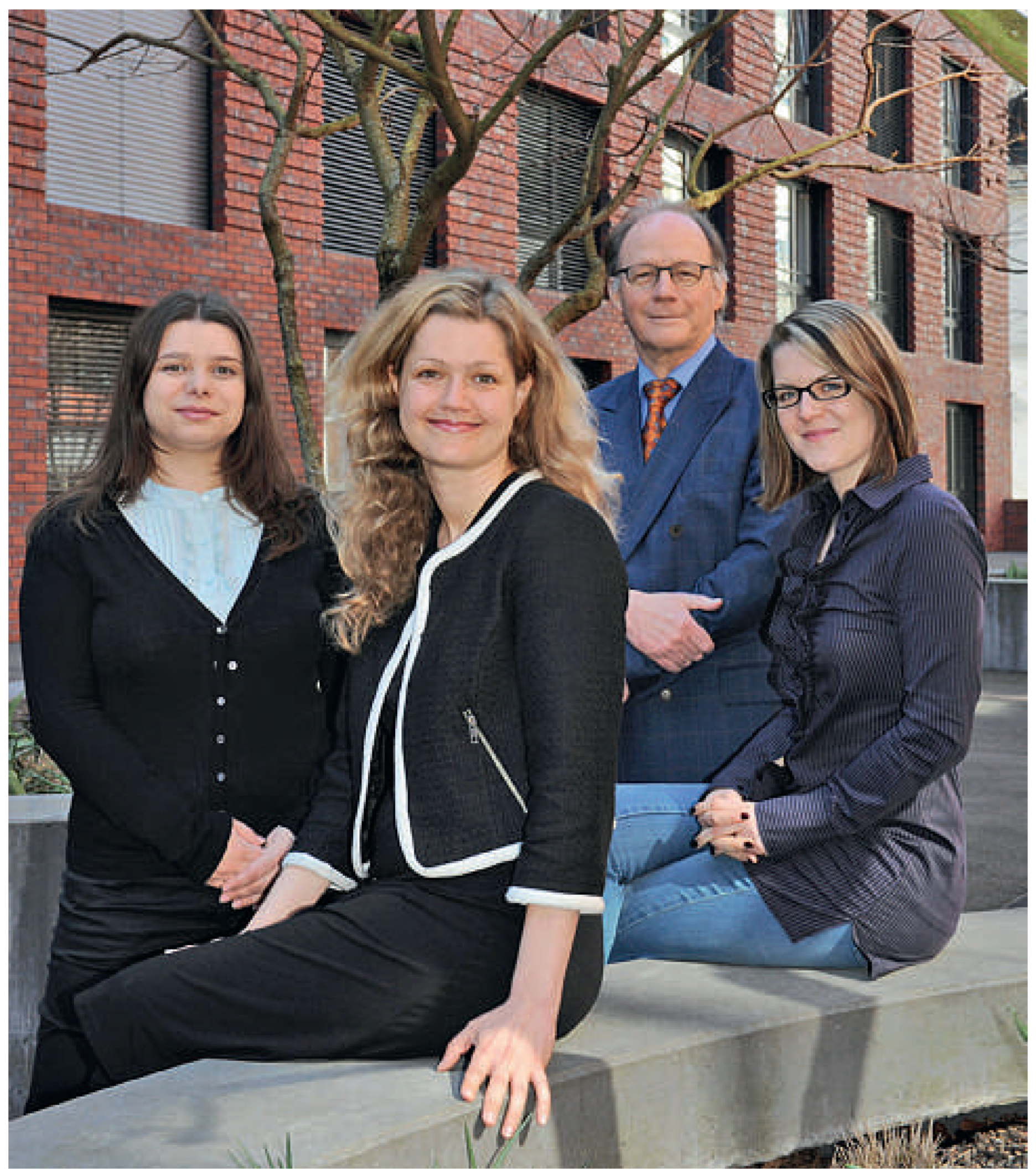The European Heart Journal is the official Journal of the European Society of Cardiology, one of the largest medical societies w ith more than 40 member states and over 45 000 members. Its annual congress has become the largest scientific meeting worldwide with more than 32,000 participants in Paris this year.
The official journal of this impressive Society is the European Heart Journal (
Figure 1) which was founded in 1980 and started by its first Editor-in-Chief, Desmond Julian, from the United Kingdom. He was followed by Henry E. Kulbertus from Liège, Belgium and later further developed by Kim Fox from the Imperial College in London and then by Franz van der Werf from the University of Leuven in Belgium.
Since 2009 the European Heart Journal is run out of the Zurich Heart House by a professional team (
Figure 2) and editors of the department of cardiology as well as prestigious institutions around the world (
Figure 3). Its Editor-in-Chief, Thomas F. Lüscher, has changed the layout of the journal and has introduced CardioPulse which reports about scenes behind the papers and is edited by Andros Tofield. Further, invited reviews by key opinion leaders, ESC abstracts reporting on the latest clinical trials and clinical trial updates as well as registries from the annual meetings of the ESC, the American Heart Association and the American College of Cardiology as well as the new fast track basic science are more features of the journal. The number of submissions has increased and acceptance rate has decreased to currently 12–14%.
Importantly, the current editorial team introduced the ESC family which allows for effective manuscript transfer from the European Heart Journal to its subspecialties to sister journals such as the European Journal of Heart Failure, EuroPace, European Journal of Cardiovascular Prevention and Rehabilitation as well as the EHJ-Cardiovascular Imaging among others. Between 300 and 400 manuscripts are transferred each year due to the fact that they are either too specialised, too technical or only interesting for subspecialists rather than the general cardiologists reading the European Heart Journal. The ESC journal family is the only ESC journal fam-ily in cardiovascular medicine currently with an impact factor of all sister journals.
Let’s hope that through this success of the European Heart Journal our ESC journal family will benefit in terms of manuscript submissions by attracting the best papers in research and clinical medicine. The editorial team needs the support of scientists around the world in particular also those from Switzerland and is proud that it can publish this prestigious journal in our country.
All this could only be achieved thanks to a large number of deputy and associate editors from Zurich and Universities around the world who help to select the best papers leading eventually this year for the first time to an impact factor of over 10. The European Heart Journal is proud to belong to the most prestigious journals worldwide and publishes relevant work for clinicians interested in science as well as clinical medicine. For the latter the guidelines of the European Society of Cardiology as well as current opinions from working groups as well as key opinion leaders together with seminal original research have become the main stem of the journal’s success.






